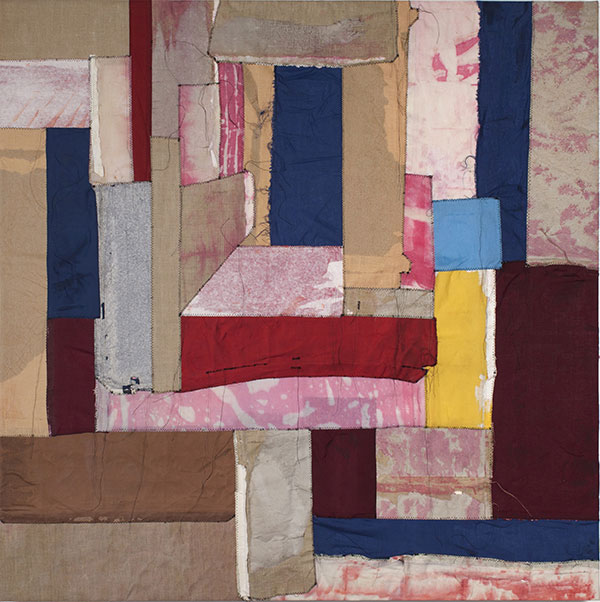|
James Brown
By pasting the back of an old road map onto his canvas, James Brown relies on the orthogonal structure given by the map's folds to suspend an abstract, supple and mysterious figure. James Brown's work, which was revealed in the early 80's, at the same time as Basquiat and Keith Haring, immediately met with an international recognition for its treatment of the figure. James Brown, who had been living in Mexico since many years, passed away at the beginning of the year in a car accident.
Nicola De Maria
For Nicola De Maria, given their proportions, his small vertical paintings represent heads. That being the case, all that occurs on the surface, those points of colour interlinked by connections, the scratchings in the live material of the paint, is supposed to be the dream inhabiting this head. After a brief but intense international career in the 80s, Nicola Di Maria retired to Turino where, in isolation and calm, he pursues a secret and inspired work.
Günther Förg
Grids, spots, drippings, none has better explored the infinite array of marks a paintbrush can make on a canvas as has Günther Förg. With irony and intelligence, he revisits art history, evoking through a form or a colour such or such another of his masters. The work chosen here is emblematic of our subject: the confrontation on the same surface of geometric rhythms and an informal and fluid space. Recently a major retrospective of Förg's work was held at the Stedelijk Museum of Amsterdam, followed by one at the Dallas Museum of Art.
Samuel Levi Jones
The formal description of Samuel Levi Jones' work – cloth strips of varied width, length and colour, sewn together as in a patchwork – is not enough to reveal the painter's aim. By having a closer look, one realizes that this surface is composed of fragments from the bindings ripped off scientific or legal books. It is the academic knowledge these books transmit which the American artist intends, through this iconoclastic gesture, to question and deconstruct. From these rags, he makes a coat of arms. The Museum of Indianapolis (USA) dedicated an exhibition to the artist in 2019.
Sean Scully
The luminous vibration of the many superposed layers of paint breathes life into the orthogonal structures which compose the framework of Sean Scully's "Wall of Light" series. A major retrospective, for which Galerie Lelong is lending a seminal work, was to open this spring at the Fort Worth Museum. The new dates of the show have not been fixed yet.
Juan Uslé
It is by listening, at night, to the rhythm of his heartbeats that Juan Uslé deposits each brushstroke, the succession of which form the intrigue of the paintings he calls Soñe que revelabas. Juan Uslé, who currently works in Cantabria and New York, just received in March 2020 the Florence and Daniel Guerlain Foundation Prize for Drawing.
Fabienne Verdier
By handling with all the strength of her body, a large suspended paintbrush conceived by herself, across the canvas, Fabienne Verdier on it deposits the trace, the flux, the energy she concentrates in her movement. Control and freedom, premeditation and improvisation are here intimately linked. Following the huge success of her exhibition at the Musée Granet of Aix-en-Provence last summer, Fabienne Verdier is preparing for the Unterlinden Museum of Colmar in 2022 a series of paintings which will be a dialogue with Grünewald and Schongauer, the two artists whose masterpieces the museum hosts.
|



